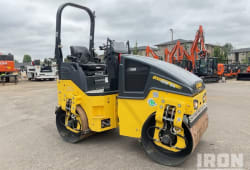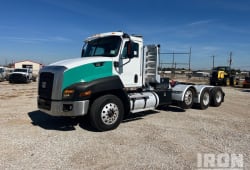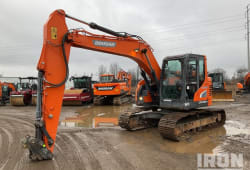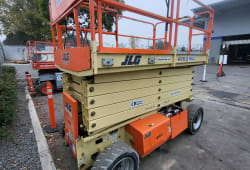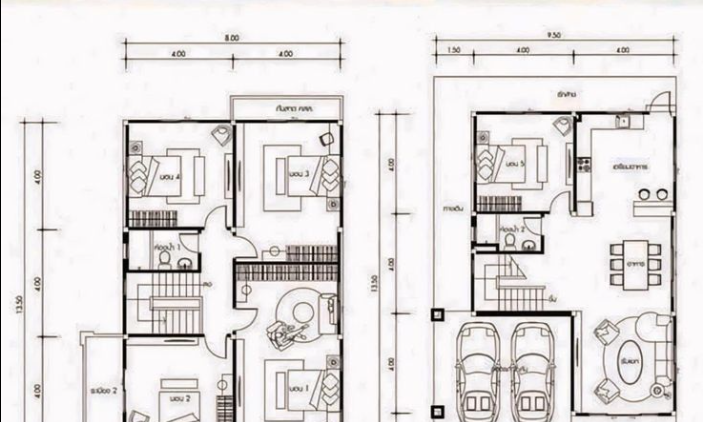Straw Bale Construction: Techniques, Pros and Cons, and Its Purpose in Modern Building
4 Lectura mínima
)
agosto 17, 2025
As sustainability becomes a top priority in the building industry, straw bale construction is making a strong comeback. Once considered a niche or “alternative” method, it’s now viewed as a practical, eco-friendly option for homes and structures around the world. In this post, we’ll explore what straw bale construction is, how it works, its pros and cons, and the real purpose behind using straw as a building material.
What is Straw Bale Construction?
Straw bale construction is a natural building method that uses compacted bales of straw (often wheat, rice, rye, or oat straw) to form walls. These bales are typically stacked like oversized bricks and covered with plaster for weather protection and durability.
This technique gained popularity in the U.S. during the late 1800s, especially in Nebraska-hence the term "Nebraska-style construction." Today, it's being revived for its affordability, insulation power, and low environmental impact.
Purpose of Straw Bale Construction
:format(webp))
The purpose of straw bale construction is to create buildings that are:
Energy-efficient due to high R-values (thermal insulation)
Environmentally friendly, using renewable agricultural byproducts
Cost-effective, especially in rural or off-grid settings
Sustainable, with low embodied energy compared to conventional materials
Builders who choose straw bale construction often do so to reduce their carbon footprint, lower utility bills, and use natural materials that are biodegradable and abundant.
Straw Bale Construction Technique: How It Works
There are two main straw bale construction techniques:
1. Load-Bearing (Nebraska-Style)
In this method, the stacked straw bales support the weight of the roof. No wooden frame is needed, making it simple and cost-effective.
2. Infill (Non-Load-Bearing)
Here, a structural frame (usually wood or steel) supports the roof, and straw bales are used only for insulation and wall material. This is the most common modern method, especially in areas with strict building codes.
Basic Steps in the Straw Bale Building Process:
Foundation prep – Raised foundations are best to prevent moisture damage.
Bale stacking – Bales are laid in staggered rows and pinned or tied together.
Compression and shaping – Bales are shaped with chainsaws or machetes and compressed to fit tightly.
Plastering – A natural plaster (clay, lime, or cement) is applied in multiple layers to protect the bales from the elements.
Straw Bale Construction Pros and Cons
Pros:
Excellent insulation: R-values range from R-30 to R-35.
Sustainability: Uses agricultural waste instead of new materials.
Fire-resistant: Surprisingly, tightly packed straw bales are more fire-resistant than you might think.
Affordable: Especially for DIYers and owner-builders.
Acoustic benefits: Straw bales offer excellent soundproofing.
Cons:
Moisture sensitivity: Straw must stay dry to avoid mold or rot.
Limited availability of skilled labor: Not every builder knows straw bale techniques.
Building codes: May be difficult to get permits in some regions.
Maintenance: Natural plasters need regular upkeep.
Not ideal for every climate: High-humidity or termite-prone areas may pose risks.
Common Misconceptions About Straw Bale Construction
"It's a fire hazard."
Not true. Densely packed straw bales have little oxygen, making them less flammable than open-framed walls.
"It attracts pests."
Straw is the stalk, not the grain-so it's not edible. When plastered properly, rodents and insects can't nest inside.
"It's not strong or durable."
With good design and proper maintenance, straw bale homes can last 100+ years.
Modern Applications of Straw Bale Construction
Straw bale is no longer just for back-to-the-land enthusiasts. It’s used in:
Eco-homes and passive solar homes
Tiny houses
Community centers
Climate-resilient shelters
Architects and builders are incorporating straw bale methods into modern green design, often combining it with other natural materials like rammed earth, timber, and cob.
Cost and Timeline
The cost of straw bale construction varies, but it's generally 15-30% cheaper than standard construction-especially when labor is DIY. Construction time can be similar to traditional methods, with added time for plastering and weather-proofing.
Over time, the energy savings can be substantial, making it a smart investment in energy-conscious living.
Final Thoughts: Is Straw Bale Construction Right for You?
If you're looking for a natural, affordable, and energy-efficient way to build, straw bale construction is definitely worth considering. While it comes with some challenges-like moisture control and finding experienced builders-it also offers huge potential for savings, sustainability, and creativity.
Whether you’re building your dream eco-home, a tiny house, or a rural retreat, this centuries-old method has a solid place in the future of green construction.
Frequently Asked Questions
What climates are best for straw bale construction?
Dry or semi-arid climates are ideal. Extra moisture protection is needed in humid regions.
How long do straw bale homes last?
With good maintenance, they can last over 100 years.
Do I need permits for straw bale buildings?
In many areas, yes-but it depends on your location. Infill methods are easier to get permitted.

Samir Shah is the Co-Founder and Chief Product Officer of Boom & Bucket, where he leads the development of innovative solutions for buying and selling heavy equipment. With a background in engineering, product development, and business strategy, Samir has a track record of taking companies from concept to market success. Previously, he was the Head of Cat Digital Labs at Caterpillar, overseeing digital initiatives and product launches. He holds degrees from MIT Sloan and Carnegie Mellon, and he is passionate about tackling big challenges in underserved industries.

